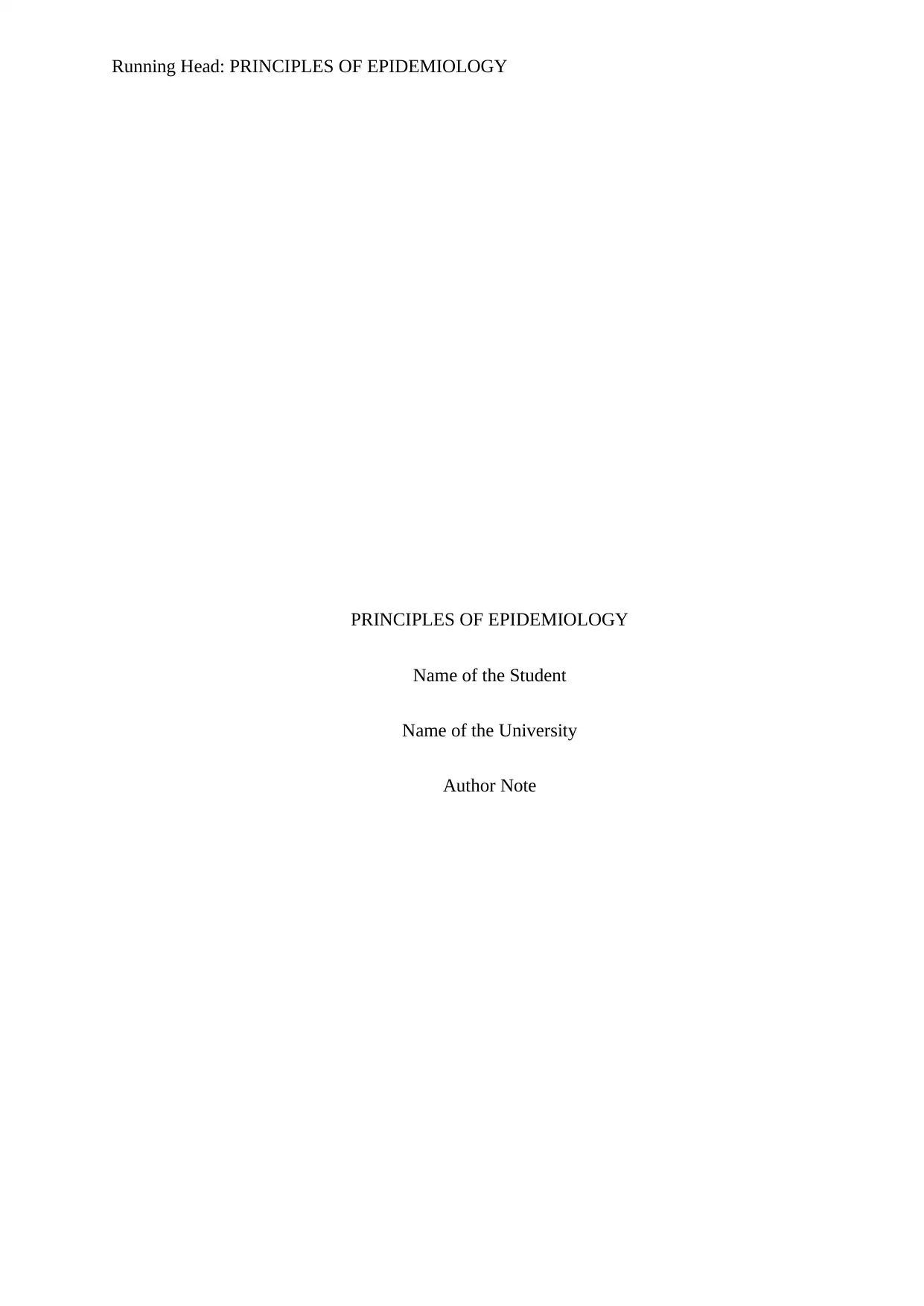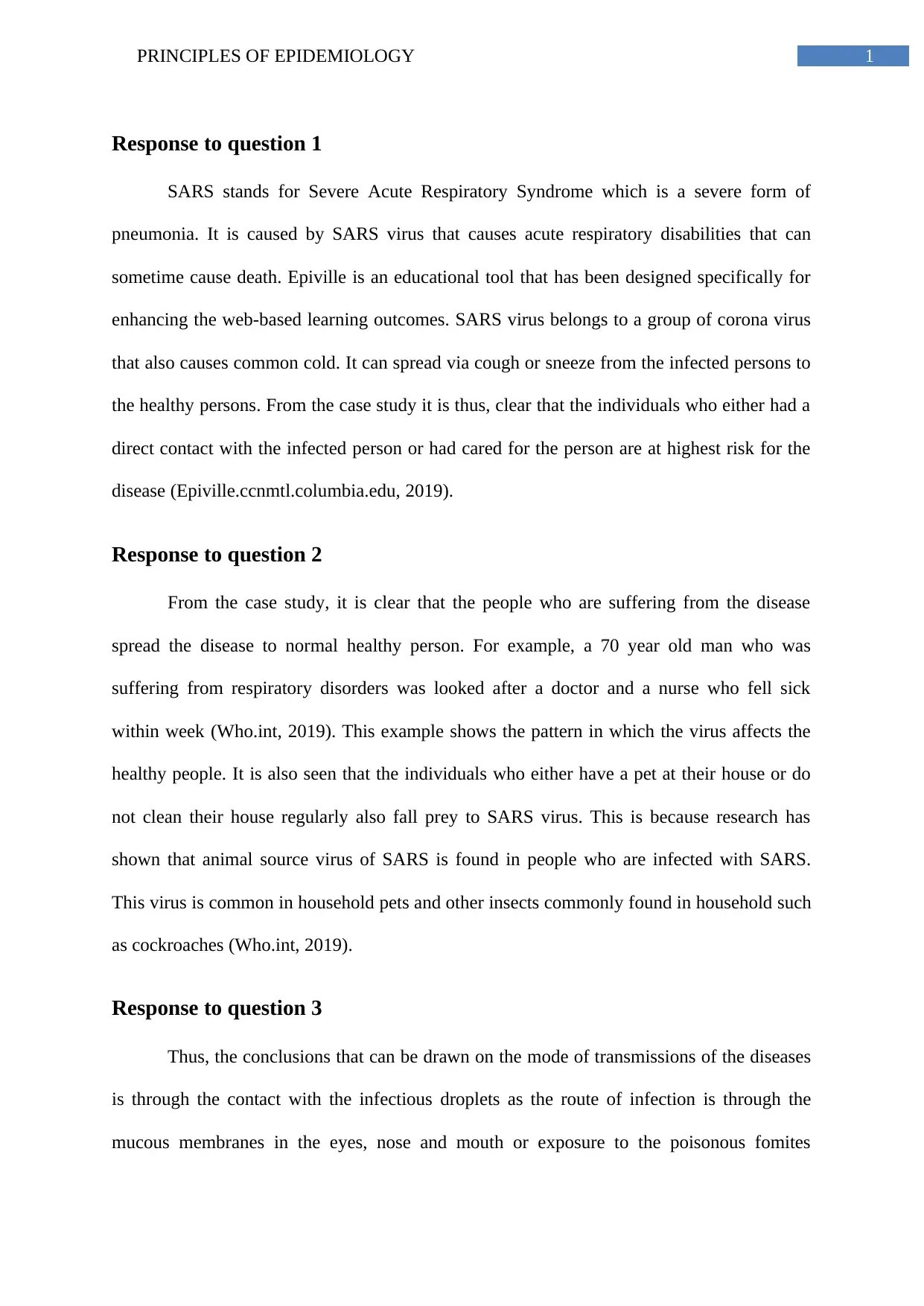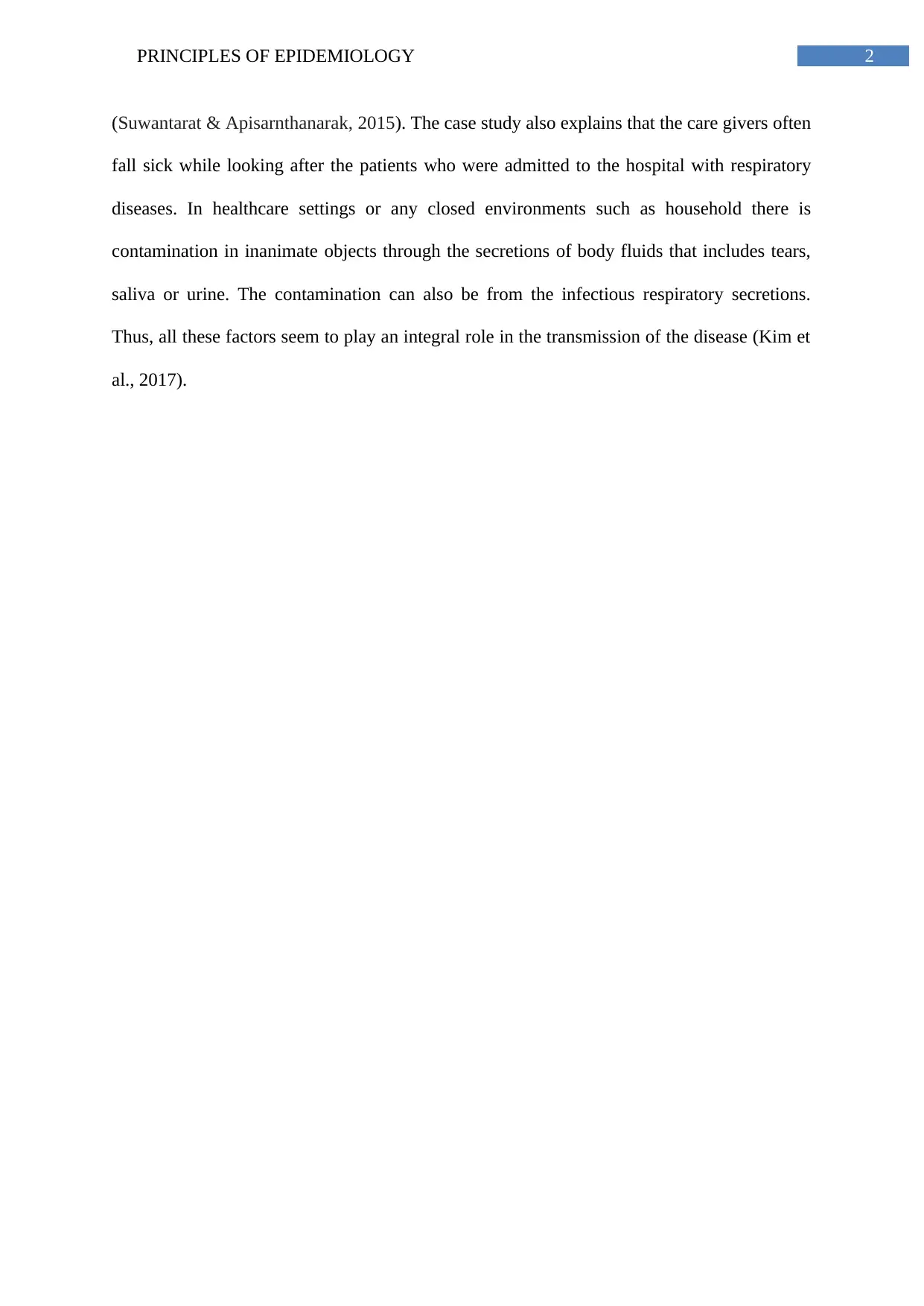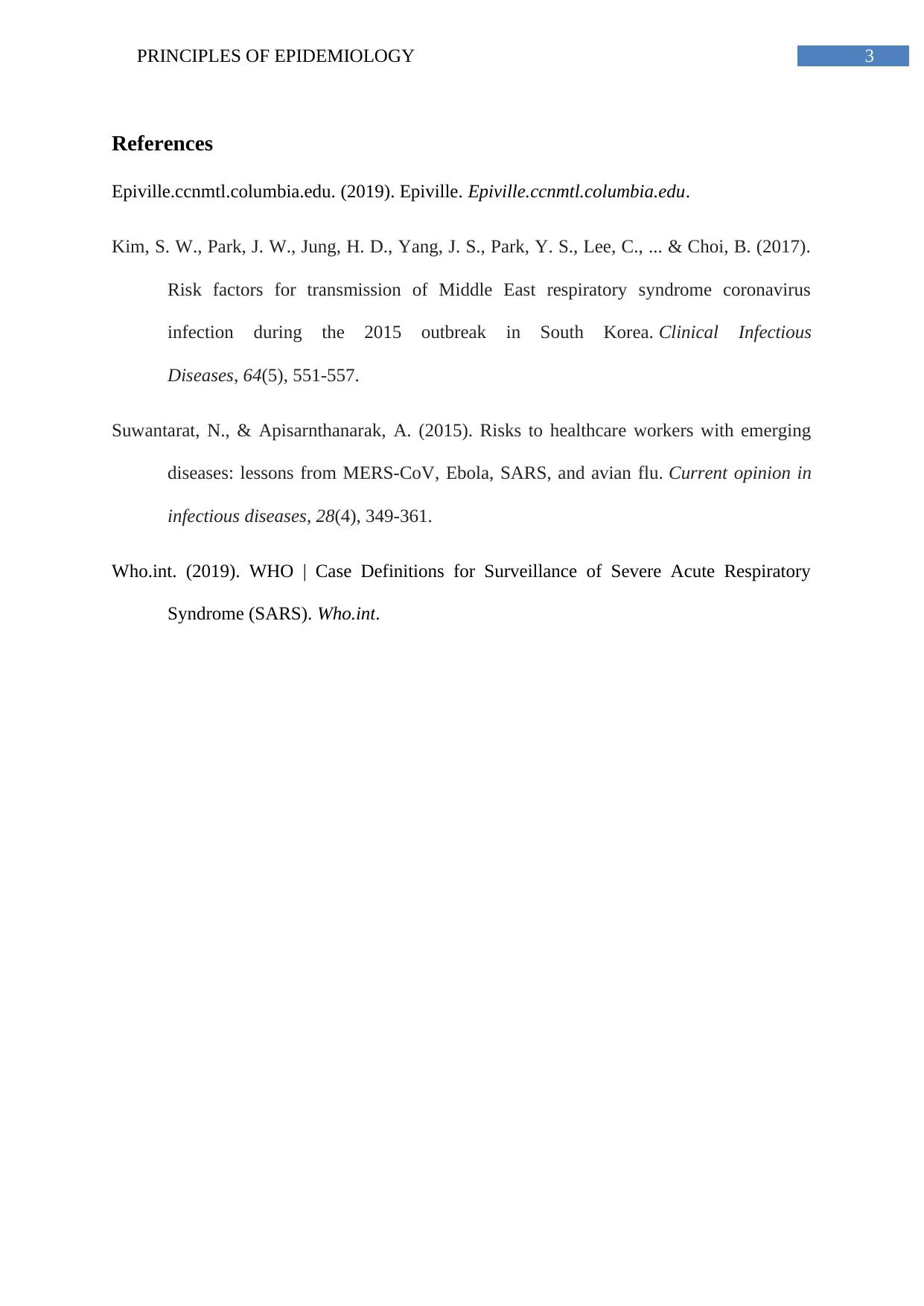University Name: Principles of Epidemiology - SARS Case Study Report
VerifiedAdded on 2022/11/13
|4
|599
|252
Report
AI Summary
This report examines a case study on Severe Acute Respiratory Syndrome (SARS), focusing on its epidemiology and transmission patterns. The analysis includes the identification of risk factors, such as direct contact with infected individuals and the role of household pets and unsanitary conditions in disease spread. The report also delves into the modes of transmission, highlighting the importance of contact with infectious droplets and contaminated fomites, especially in healthcare settings. The findings emphasize the significance of understanding these factors to control and prevent the spread of SARS, with references to relevant research and case studies.
1 out of 4











![[object Object]](/_next/static/media/star-bottom.7253800d.svg)